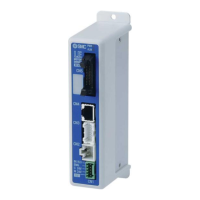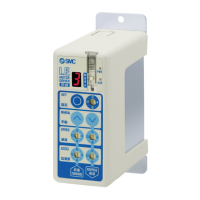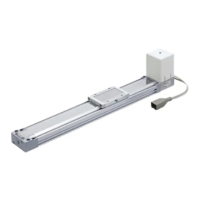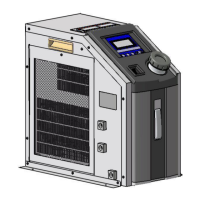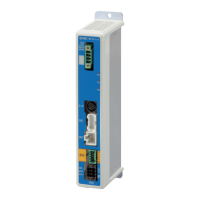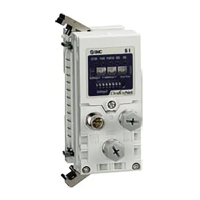19.EtherNet/IP COMMUNICATION
Machine diagnosis function
From the data in the driver, this function estimates the friction and vibrational
component of the drive system in the equipment and recognizes an error in the
machine parts, including a ball screw and bearing.
This function is available with Setup software (MR Configurator2
TM
) or via a
network.
Lost motion compensation
function
This function improves the response delay generated when the machine moving
direction is reversed.
This function sets constant and uniform acceleration/deceleration droop pulses to
almost 0.
Limits travel intervals using LSP (Forward rotation stroke end) and LSN (Reverse
rotation stroke end).
Limits travel intervals by address using parameters.
The same function with the limit switch is enabled by setting parameters.
Section 5.8
_
Section 5.3
[Pr. PT15] to
[Pr. PT18]
You can configure various settings and monitor the driver in a web browser. Refer
to the website of Mitsubishi Electric Automation, Inc. for details.
Superimposed synchronous
control function
This function drives the servo motor by using externally input pulses as the
master.
Positioning function by operation
start-up signal
This function starts positioning with an input signal.
19.1.3 Communication specifications
The following table shows the communication specifications.
EtherNet/IP communication
specifications
THE CIP NETWORKS LIBRARY Volume 1
Common Industrial Protocol (CIP™)
THE CIP NETWORKS LIBRARY Volume 2
EtherNet/IP Adaptation of CIP
RJ45, 2 ports (port 1 and port 2)
CAT5e, shielded twisted pair (4 pair) straight
cable
Double-shielded type recommended
Line, Star, Ring, or a connection topology
where the topologies are used together
Variable communication speed
10 Mbps/100 Mbps (half duplex/full duplex)
Transmission speed between
stations
Compliant with the specifications of the
standard Ethernet
Explicit message communication
Asynchronous
Sending/Receiving: 1 channel each
I/O message communication
Cycle time: Select from 1 ms to 100 ms
Network Status, Card Status, LINK/Activity
(port1, port2)
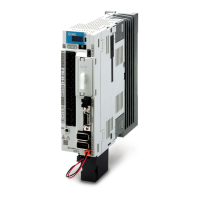
